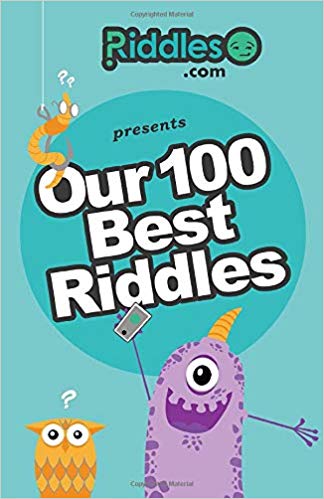Enter a keyword into the search box. The riddle search will check to see if the word is in the Title, Riddle, or Answer and return results if they exist.
"Pen" Riddles - Next 10 of 284.
Riddle:
What kind of can never needs a can-opener?
Answer: A toucan!
Riddle:
What is the freedom of birds and the pen of old men?
Answer: Feathers. Feathers make up a bird's wings, giving it flight or its freedom. Quill pens were used by men in older times.
Riddle:
You have seven pens and nine pigs. You must arrange the pens so that each pen has an even number of pigs. Zero is not allowed, nor will it work. How do you do this?
Answer: Stack the pens.
Riddle:
So, you're a math wiz. You know 2 nickles is 20 cents. How much is 1000 Canadian pennies?
Answer: Nothing, in Canada pennies are worthless.
Riddle:
Cleopatra and Anthony were near a fish bowl and somehow they died. What happened?
Answer: Cleopatra and Anthony were fish and a cat knocked over their fish bowl and since fish can't survive without water they died!!
Riddle:
Tara has $29.00 dollars. She bought 4 coloring books that cost $3.00 each, 4 boxes of Crayola crayons that cost $2.00 each. She spends the rest of her money on markers.
How much money did she spend on markers?
Answer: She spent $9.00 on markers.
Riddle:
David is throwing Robert a surprise birthday party but he has to stay within his budget. He spent half of his money plus $2.00 on the cake. Half of what he had left plus $2.00 was spent on balloons and streamers. Then he spent half of what he had left plus $1.00 on candy. Now he is out of money, how much did he start with?
Answer: This one is best solved working backwards, the last part David spent half of what was left plus $1.00 on candy and then was out of money. That means he must have spent $2.00 on Candy as $1.00 was half of what he had using the same logic backwards: $2.00 on candy $6.00 on Balloons and Streamers $12.00 on the cake Total of $20.00.
Riddle:
What would happen if a girl swallowed her spoon?
Answer: She couldn't stir.
Riddle:
My first may be fashioned of iron or wood, And at window or door for safety is placed; In village or town, it does more harm than good, Leading people their health, time, and money to waste. My second's a lady, bewitching and fair, And for love of her people will labor and strive; Will rise before dawn, and be wearied with care, And pursue her with ardor as long as they live. My whole is what ladies admire and approve, The shopkeeper's boast-the purchaser's prize; 'Tis a ninepenny chintz-'tis a one-shilling glove- It is something which makes people open their eyes.
What am I?
Answer: Bar-gain.
Riddle:
A man grabbed a woman's ring and pulled on it, then dropped it. How did this save her life?
Answer: They were skydiving, and she was unconscious. He pulled the ripcord ring for her, and the parachute opened.

